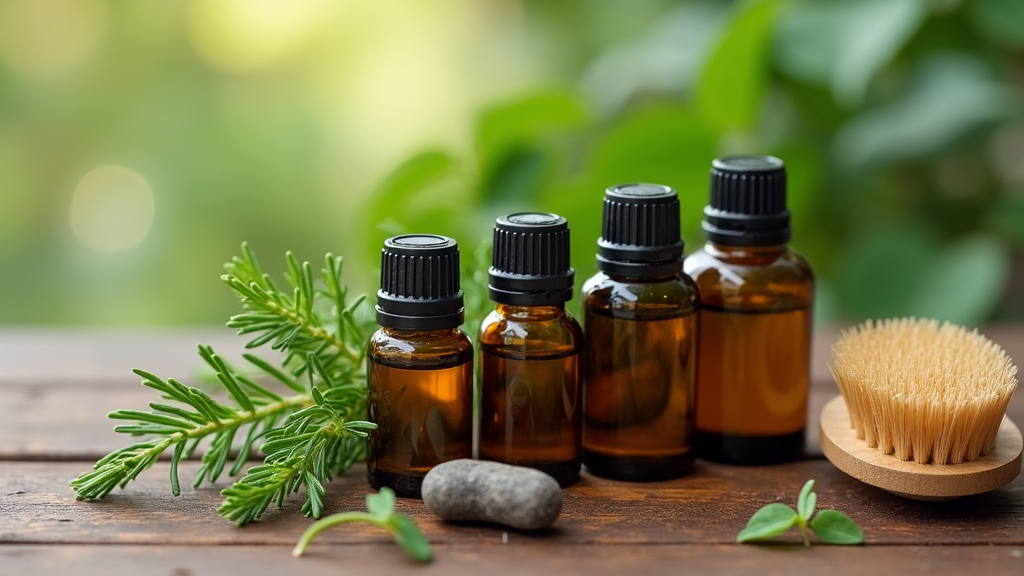If you’re dealing with thinning hair, you’ve probably searched high and low for something that actually helps. Essential oils have been getting a lot of buzz as natural remedies for all kinds of hair concerns, including hair thinning. Whether you’re looking for ways to boost your hair’s appearance, encourage growth, or just want to give your scalp a little TLC, checking out essential oils can be an interesting, holistic approach. Here, I’m breaking down how essential oils fit into a hair care routine, which ones are worth checking out, and what to keep in mind to stay safe and realistic about results.

Why People Reach for Essential Oils for Thinning Hair
Thinning hair isn’t just something that happens with age; it can hit at any stage, due to stress, genetics, diet, hormone shifts, or medical reasons. While essential oils won’t act as miracle workers, they’ve gained popularity because lots of users find them relaxing, pleasant to use, and in some cases, a nice way to support healthierlooking hair and scalp.
The idea here isn’t about regrowing hair overnight. Instead, it’s about improving scalp conditions and giving hair follicles a better shot at staying healthy. Some oils are thought to help increase circulation or soothe irritation, which can play a supporting role when you’re aiming for a fuller look. While strong scientific support is still pretty limited, there are enough promising stories (and small studies) to make it worth exploring for yourself, especially as part of a gentle, consistent hair care routine.
Getting Started With Essential Oils for Hair Health
Trying out essential oils for thinning hair doesn’t have to be complicated. The basics come down to picking the right oil, understanding safe usage, and knowing how to blend for your needs. Essential oils are intense, concentrated plant extracts, so always use them diluted. You’ll usually mix a couple of drops with a carrier oil, like coconut, jojoba, or grapeseed, before applying to your scalp or hair.
Here are some common terms you’ll run into:
- Carrier Oil: A neutral oil that helps dilute essential oils and adds nourishment to your hair and scalp (think coconut, sweet almond, or avocado oil).
- Topical Application: Rubbing diluted essential oil blends directly onto your scalp, usually by gentle massage.
- Patch Test: Testing your mix on a small patch of skin to avoid bad reactions; really important, especially if you have sensitive skin or allergies.
Most Popular Essential Oils for Thinning Hair
Certain essential oils seem to come up a lot when people talk about supporting hair growth or thickerfeeling hair. Here’s a quick rundown of some that get people talking:
- Rosemary Oil: Sometimes called the MVP for hair. Some research suggests it may help with scalp circulation and boost hair appearance. Many say regular use makes their hair feel stronger and more robust.
- Peppermint Oil: Known for its cooling tingle, peppermint oil can wake up the scalp and make it feel refreshed. In small studies, it’s been linked to thickerlooking hair and boosted follicle activity.
- Lavender Oil: This is soothing for both the mind and the scalp. Lavender has mild antimicrobial properties and can reduce irritation; plus, it smells great, making your selfcare routine feel extra relaxing.
- Cedarwood Oil: Sometimes used alongside other oils, cedarwood may help balance scalp oil and has been explored in studies related to hair strength.
- Tea Tree Oil: Best for dealing with scalp buildup, flakiness, or itchiness. This oil fights off excess oil and keeps the scalp fresh and clean, which can be handy if scalp health is affecting hair thickness.
It’s common to blend two or more oils for maximum effect; rosemary and peppermint together with coconut oil is a combo a lot of people love for an invigorating scalp massage.
Here is a link to check out some amazing oils:
https://referral.doterra.me/4740777
Easy Step-by-Step Guide: Using Essential Oils for Thinning Hair
Simplicity is key, so there’s no need for fancy mixes. Here’s a straightup way to get started with an essential oil hair ritual:
- Pick Your Oils: Choose one or two essential oils you want to try based on your main concerns.
- Blend Wisely: In a small bowl, mix 2–4 drops of each essential oil with about a tablespoon of your favorite carrier oil.
- Test First: Do a patch test on your forearm. If there’s no redness or itching after 24 hours, you’re good to go.
- Apply to Scalp: Use your fingertips to massage the oil blend onto your scalp. Massaging helps increase blood flow and gets the oils where they need to be.
- Leave On: Let the oils sit for at least 30 minutes (some people leave them in overnight). Wash your hair as usual.
- Repeat: Try this two to three times per week for best results.
Consistency and patience are really important. Even if you love your blend, it can take weeks or even a couple of months to notice changes in how your hair feels and looks.
Things To Keep In Mind When Using Oils
Going natural is great, but essential oils are powerful stuff and can sometimes do more harm than good if you go overboard or aren’t careful. Here are a few things I always pay attention to:
- Sensitivity and Allergies: Even with natural ingredients, reactions can happen. Always do a patch test, especially if it’s your first time or you’re trying a new blend.
- Dilution: Undiluted oils are much too strong for your skin and hair. Stick with about 2–4 drops of essential oil per tablespoon of carrier oil.
- Oily Residue: Oils can build up if not washed out properly, so double shampoo if your hair feels greasy after treatment.
- Medical Conditions: If your hair loss is sudden or severe, a quick trip to the doctor is a good move before relying on oils. Sometimes, underlying issues like hormonal imbalances or autoimmune concerns need medical care.
Possible Scalp Sensitivity
Some essential oils, such as peppermint or tea tree, can be pretty intense and may cause tingling or irritation, especially if overused. If you notice redness, itching, or burning, wash out immediately and try switching to a more soothing oil, like lavender or chamomile. Adjust the dilution ratio if your skin tends to be on the sensitive side.
BuildUp and OverApplication
More isn’t better in this case. Using oil treatments too often, or using too much at once, can leave hair heavy and limp. If your hair type is fine or tends to get oily quickly, starting with shorter treatments and making sure to shampoo afterward helps keep things balanced.
About Scent Preferences
Essential oils have pretty distinct aromas; some are refreshing and light, while others are earthy or strong. If you can’t stand the scent of cedarwood or rosemary, try switching to something milder or add a couple of drops of your favorite gentlesmelling oil to your blend for balance.
How Essential Oils Fit Into RealLife Hair Routines
Adding essential oils doesn’t mean ditching everything else. Think of them as a bonus step that supports scalp wellness, pairs well with gentle shampoos, and works alongside any overthecounter or prescribed treatments. Plenty of people keep using their favorite regular products and add an oil massage once or twice a week for that selfcare boost. For anyone who dyes or treats their hair, make sure the oils you pick won’t interact with your styling products or strip your color; most carrier oils are colorsafe, but it’s a good idea to doublecheck.
- Scalp Massages: Combine with a gentle scalp brush or a few minutes of manual massage to get the most out of each treatment.
- Targeted Care: Apply specifically to areas where you notice more thinning for a focused boost.
- Blending With Other Wellness Habits: Use essential oil hair care in routine with balanced nutrition, stress management, and good sleep habits for the best shot at seeing improvement.
FAQ: Essential Oils and Thinning Hair
Here are some common questions that pop up for anyone thinking about trying essential oils for hair:
Q: Can essential oils make thin hair thicker overnight?
A: Not really. Essential oils work slowly, over time, and results vary between people. They mainly support a healthy scalp and may help hair look fuller with regular use.
Q: What is the best carrier oil for thinning hair?
A: I’ve found coconut and jojoba oil are favorites for most, since they nourish but don’t weigh hair down. Grapeseed is another lightweight choice if you’re prone to oiliness.
Q: How long does it take to see results?
A: Some people notice small changes within a few weeks, but it’s usually at least two or three months of regular use before you’ll know if it’s making a real difference.
Q: Can I use essential oils with medicated hair loss treatments?
A: Most of the time, essential oils are fine to use on offdays when not applying medicated products, but check with your dermatologist or doctor to make sure nothing clashes.
Thinking About Your Next Steps
Treating thinning hair with essential oils is about gentle support for your scalp and hair, not quick fixes. With realistic expectations and safe practices, these oils can bring a little more enjoyment and selfcare to your hair routine. Finding what works for you is half the fun. So stay curious, go slowly, and enjoy those relaxing moments along the way. And if you ever feel like you’re not getting the results you want, reach out to a professional to find a bigger game plan for your hair health. Sometimes, a blend of selfcare and expert advice is exactly what you need to put your mind at ease and step up your confidence.
